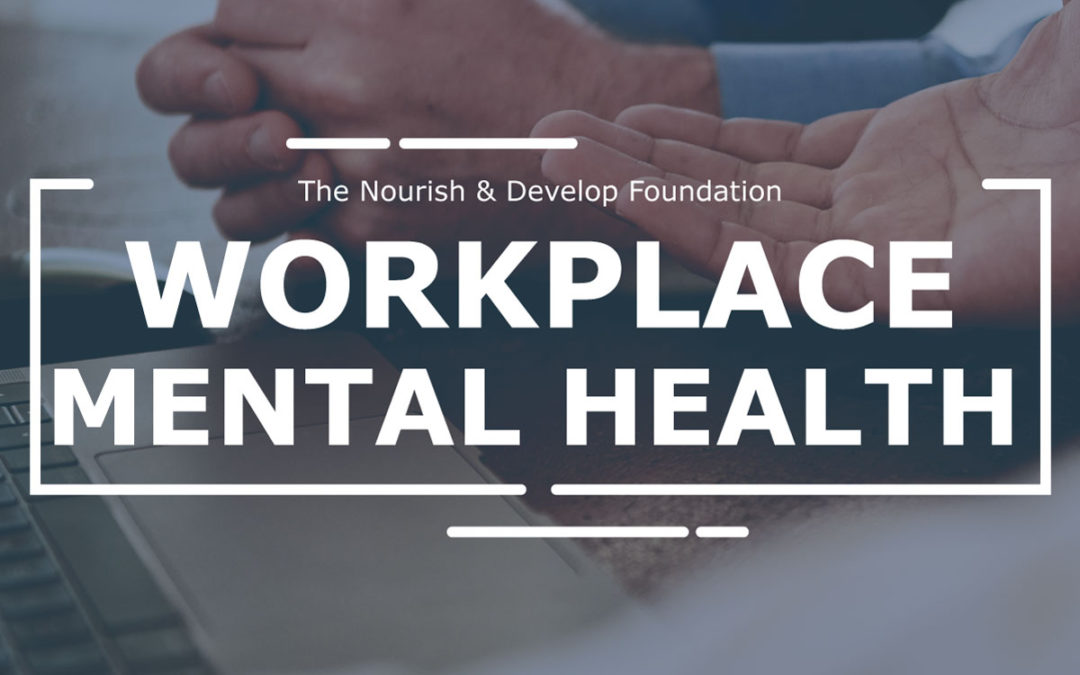For many of us, a large portion of our waking hours are spent working,
Benefits of a mentally healthier workplace:
- Higher staff retention rates
- Enhanced productivity
- Reduced absenteeism
- Improved self-esteem
- Increased job satisfaction
Everybody wins!
How can an employer do their part?
There are many fun and creative ways to get your team thinking about their own mental health! Take initiative by having discussions and activities centred around mental well-being. Some ideas include sending out periodic challenges (prepping a healthy work lunch in advance, getting 8 hours of sleep, taking a walk break during the workday, etc.), hosting events or trainings (Mental Health First Aid, fundraisers like #BellLetsTalk, workplace stress management workshops, etc.) and checking in with your staff one-on-one. Directly reach out and not only ask how someone is doing, but offer specific ways you can be of help. Whether that be designating paid sick days as interchangeable with mental health days, allowing a work from home day if possible, or offering flexibility in hours, etc.
Practice what you preach! Use your position as a leader to set an example. When staff know the company they work for is supportive of mental health, they feel more comfortable speaking up when they are struggling and to prioritize their own needs. If you found a great mental health resource, share it with the team and say it worked for you! Model healthy behaviours by not sending or checking e-mails outside of work hours, taking your mandatory breaks and allotted vacation, and setting reasonable expectations for workloads.
What can an employee do?
It is natural for us to talk about our jobs with others, to share our excitement about new projects, and even to vent at times. However, when work seems to be most of what you think, talk, and care about, your work-life balance is out of whack. Try this quick, free self-assessment quiz to find out where you are at: https://cmha.ca/work-life-balance-quiz
To live a fulfilling life, schedule uninterrupted time with loved ones, enjoy your hobbies and interests, and engage in self-care. These activities deserve the same if not more attention that your work does. It is important to have a clear separation between work and everything else which can be done by setting boundaries with yourself. Unplug when you are not on the clock, learn to say no to additional obligations if they are going to hinder your priorities, and make a clear end to the workday (go for a run to release all the emotions felt throughout the day, review your completed tasks and make a new to-do list for the next working day, don’t continue recreational activities at your workspace).
What if you are self-employed?
Being your own boss comes with many perks, but it may also be increasingly difficult to turn off your work brain. One cannot function to the best of their ability when they are ‘on’ all the time, so the key here is to shift focus to relaxation and restoration. Watching television, scrolling on your phone, and playing video games help decompress, but it is also important to spend time in nature and to practice mindfulness (merge with link to: https://www.tndf.ca/practicing-mindfulness/ ).
What if you are a full-time caregiver?
Caregiving for a loved one can rewarding but it is also especially physically and emotionally draining. Unfortunately, some people fail to understand what it is like unless they have gone through it themselves, so we need to use our courage to ask for assistance when we need it. Friends and family likely want to help but don’t know how. Ask them if they could run an errand, watch your loved one while you get some rest, or look into some community resources for you. If it is a family member you care for, ask other family members to share the financial and medical responsibilities. If someone does offer assistance, say yes! You will both feel better for it.
Mental health doesn’t care about positions nor job titles. It can affect anyone at anytime. Be considerate. Be respectful. Be kind. To all.
Resources:
Mental Health in the Workplace
Workplace Health Promotion Guide
Workplace Strategies for Mental Health
Sources:
https://www.mentalhealthcommission.ca/English/what-we-do/workplace
https://www.helpguide.org/articles/stress/caregiver-stress-and-burnout.htm



